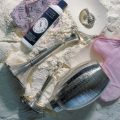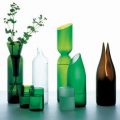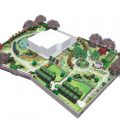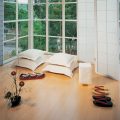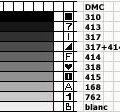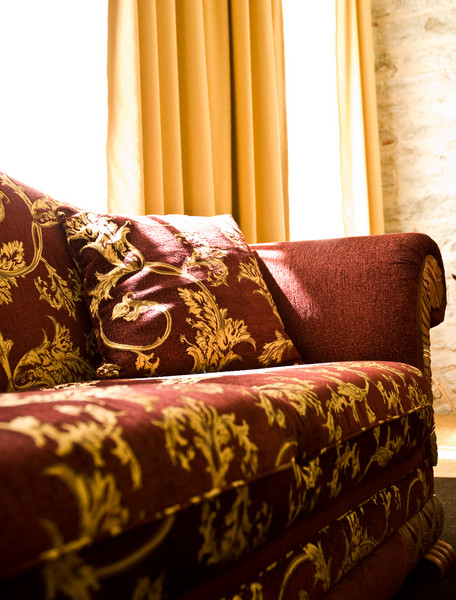 Upholstery fabrics for upholstered furniture Usually in the salonoffer several types of fabrics in several price categories. The more expensive the material, the higher its quality and durability, respectively. The same model, dressed in different fabrics, will cost differently.
Upholstery fabrics for upholstered furniture Usually in the salonoffer several types of fabrics in several price categories. The more expensive the material, the higher its quality and durability, respectively. The same model, dressed in different fabrics, will cost differently.
- The most expensive materials include leather. However, there are also so-called "super fabrics", which are close to genuine leather not only in their properties, but also in price.
- Not all fabrics can be suitable forspecifically selected by you model. There are technological limitations. Therefore, it is important to contact specialized salons with qualified sellers in order not to make a mistake in the choice.
- It is necessary to learn about the properties offeredmaterials, how to take care of them and how long their life is. After all, furniture fabrics differ from ordinary not only in thickness, but also in manufacturing technology and properties. Unlike curtains, furniture upholstery can not always be easily removed from the couch and sent to cleaning and washing.
- All fabrics used in the furniture industry can be conditionally divided into two main types: woven and non-woven. Both are popular and are present in the range of all furniture stores.
Jacquard
The very name evokes the past.Indeed, this material is still produced on a loom from cotton, synthetic or mixed threads. The thicker the thread, the denser the fabric. The quality of the fabric directly depends on the properties of the threads. This applies to strength, the ability to hold dye and other properties. The front and back sides of the fabric are usually different colors. Fans of antique tapestry will see noble classics in jacquard, and fans of Art Nouveau will note the unusual texture. One of the varieties of jacquard is scotchguard, a simple jacquard, in the production of which a special oil-, dust- and water-repellent impregnation is used. The use of impregnation makes the fabric more durable and resistant to various contaminants. Scotchguard - a shell that forms a transparent layer around each fiber, protecting it from mechanical and other influences. Tapestry is essentially the same jacquard, only in its production a larger number of threads are used, up to 100, in jacquard - up to 10. In addition, tapestry is a double-sided fabric, so both sides of the tapestry can be used for furniture upholstery.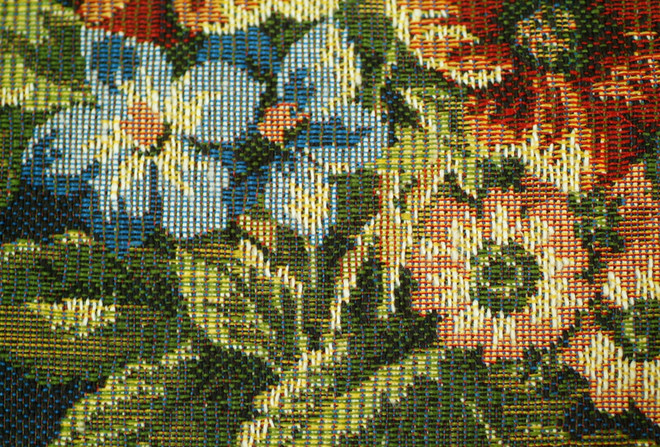 Tapestry
Tapestry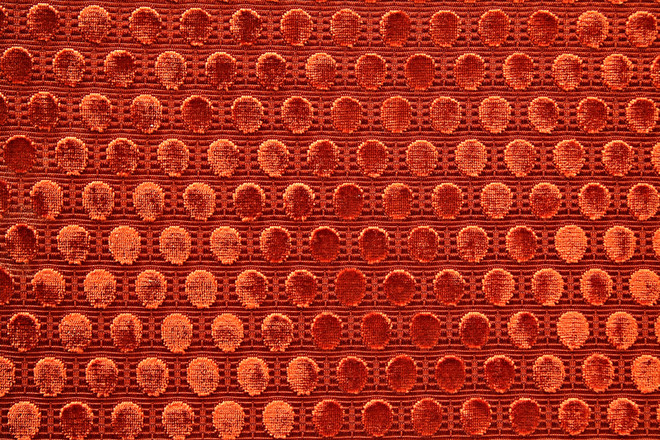 Flock
Flock
Velor or velvet
Velour is a pile fabric.Classic woven velour has nothing in common with clothing corduroy. And sometimes in the catalogs of domestic factories it is designated by the word velvet. The density of corduroy depends on the method of its manufacture. If the fleecy thread is intertwined with one warp thread, the fabric turns out loose. For high density, two warp threads are needed.
Shenill
Fabric with a complex weaving pattern.Today, chenille is the main competitor of velour. After all, the process of making velour is more complex and expensive, so its price is much higher. A significant advantage of chenille is that it can be produced in a wider range of colors. Chenille thread can also be used in combination with jacquard and tapestry, giving the fabric a noble and original look. Good chenille is resistant to abrasion. Modern chenilles, thanks to new technologies, have become hypoallergenic, "breathe", do not electrify, and the combination of artificial fibers with natural ones gives them strength, durability and a feeling of comfort.
Microfiber (artificial suede)
This furniture fabric is almost indistinguishable fromnatural suede, although it is made from polyamide fiber. Compared to suede, microfiber has a number of advantages: high abrasion threshold, color fastness, unpretentiousness in care, a large selection of shades. Plastic and soft fabric makes it possible to make beautiful and practical covers for furniture. The velvety surface and rich texture of the fabric give the interior a luxurious and cozy look.
Flock
This fabric is a type of non-woventextiles. The art of gluing finely chopped pile onto a dense textile base using a thin layer of resin was born in China in the 1st century BC. Today, when creating flock, fine nylon pile is used, which is fixed to the base using an adhesive composition. The density and uniformity of the pile determines the quality of the flock. Modern flock fabrics are durable, environmentally friendly, and can withstand not only animal claws, but also thermal tests. Thanks to a special coating, the fabric is not susceptible to moisture and contamination.
Teflon flock
New generation fabric based on microfiber,made using Du Pont technology. A special Teflon coating gives it unique waterproof and dirt-repellent properties (even traces of a ballpoint pen can be easily removed with alcohol). This fabric has antiseptic and anti-allergenic qualities, which is very important in the unfavorable conditions of large cities. In addition, Teflon flock can be either smooth or fleecy, made in a rich color range.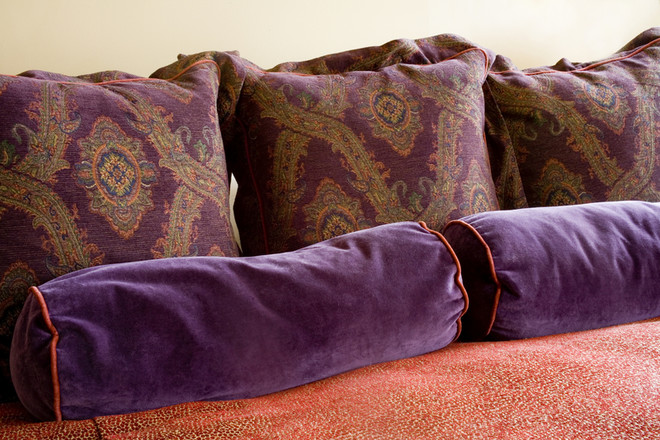 Shenill
Shenill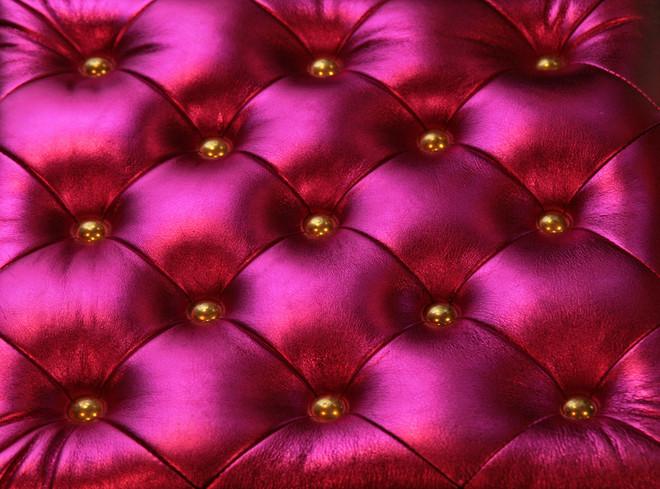 Leather
Leather
Care Tips
None of us are immune from accidentsfurniture contamination: spilled hot coffee and other troubles. Don't worry, you won't have to throw away the spilled sofa and run for a new one. All you have to do is clean it properly, and it will be as good as new. To extend the life and keep the newness of upholstered furniture, you need to follow several basic rules of regular care.
- First of all, it is necessary to regularly vacuum the furniture to remove dust.
- Periodically, as it gets dirty (but not less than 1once a month), it is necessary to wet clean upholstered furniture from dust. And if leather furniture is simply wiped with a damp cloth, then in the case of fabric upholstery everything is a little more complicated. Furniture upholstered with fabric should not be heavily wetted and at the same time simply beaten out (a cloud of dust will rise, which will settle anyway). Before beating out, cover the furniture with a damp sheet, and if you moisten the sheet with a light vinegar solution, the colors on the upholstery will become brighter.
- Particular attention when cleaning (including leather upholstery) should be given to the seams, it is in these places that most dust is usually collected.
- Spilled liquids should be immediately removed from the surface of the material, preventing them from spreading and penetrating the base of the fabric or pile.
- To remove stains from furniture, studded with Chenille andvelours, you should make a weak solution of soapy water and prepare a soft brush. Gently moisten the contaminated area with the prepared solution with a brush. Do not water the stain soapy water abundantly, just simply wet the brush and gently cleaned the desired place. After that, the wet spot should be dried and combed with a soft brush, in order to restore the crumpled pile and give the furniture the original look.
- Spots left by tea and coffee are bestremove with a solution of vinegar and detergent. However, this method is not suitable for old spots. Do not try to scrape them off a soft surface, as you can damage the original gloss and hairiness of the material. Such spots should first be soaked, and then removed with a soft sponge or brush.
- Beer spots are best to "display" all the samesoap solution, but for further processing and odor removal, the surface of the stain should be treated with a weak solution of vinegar - about 2-3 spoons of white vinegar per liter of water.
- Stains on the leather surface should be removed with a soft damp cloth. Do not use alcohol, acetone or soap - these substances are not suitable for leather upholstery of an armchair or sofa.
On this topic:
- Cleaning of upholstered furniture: ways and means
- What to look for when buying sofas and armchairs





